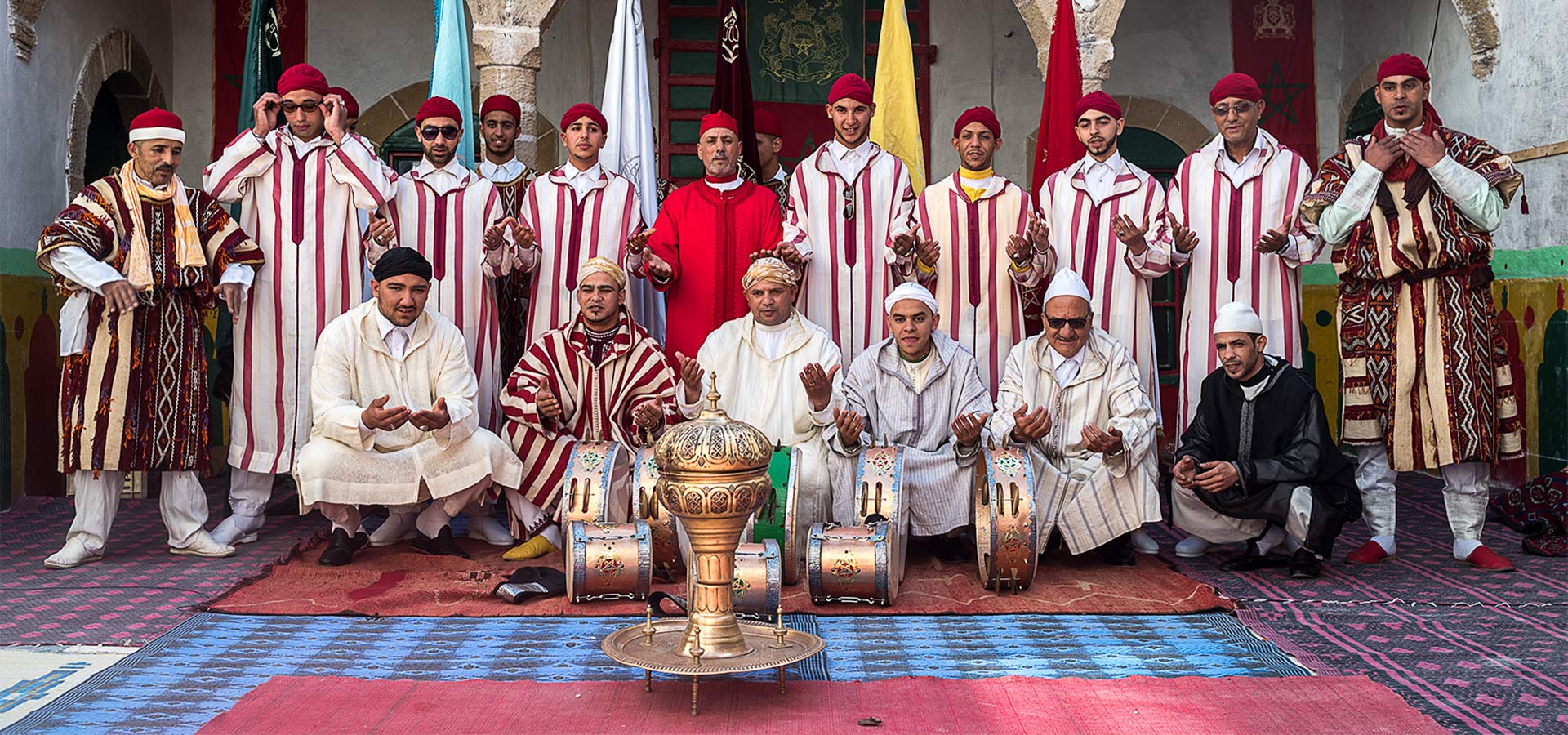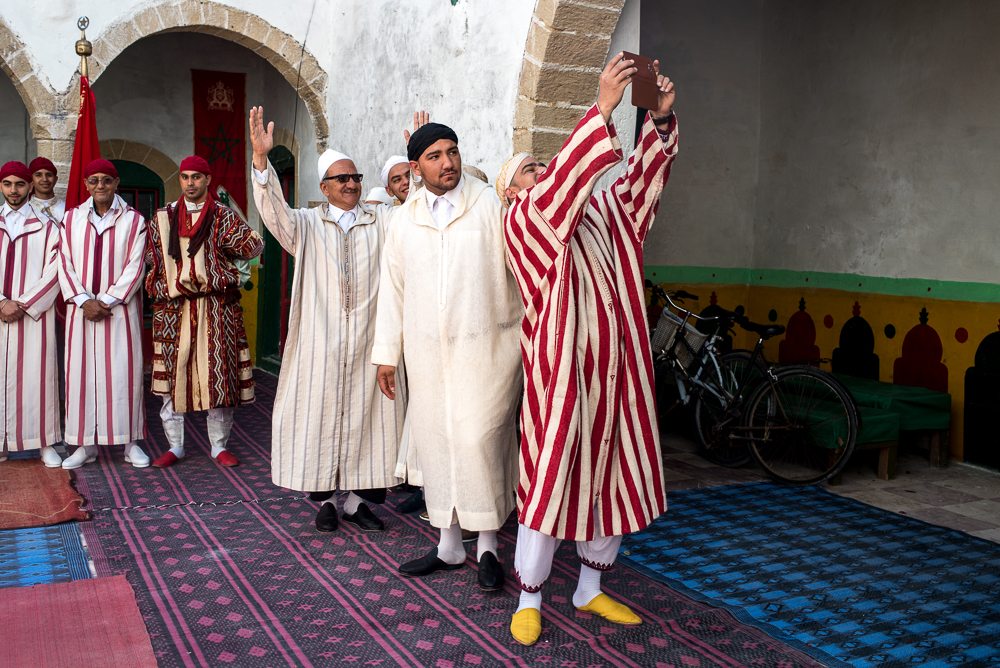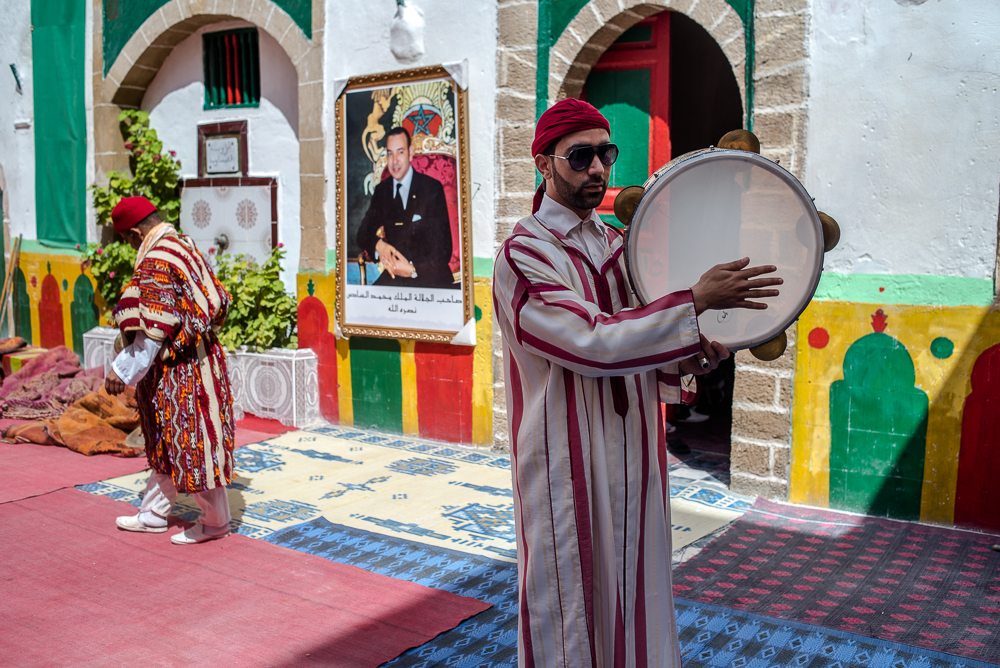Despite its less traditional interpretation of Muslim faith, Morocco remains a devout country. Mosques remain the centres where Islam is worshipped, but a series of other religious institutions, called Zaouias, have an immersive spiritual and civic role. These are often formed around a particular saint or Sidi and maintained by that person’s family.
A variety of spiritual, cultural and civic activities occur at these centres. Reflecting the spiritual nature of traditional Gnawa music, two Zawiyas hosted a number of concerts over the Gnawa festival. These events started at 11pm and lasted about 3 hours. They took the form of shorter ‘lilas’, where music, incense, dance and trance encourages personal transformation and relief from either illness or spirit-possession. Possession by djinns ( bad spirits ) remains a commonly held belief today.
These photographs depict members of the Zaouia Aïssaoua preparing for the procession and opening of the 19th Gnaoua and World Music Festival, commencing 12th May 2016 at Essaouira. I had visited most of the zouias in Essaouri several days earlier and this particular brotherhood was the most welcoming of all, inviting me back to watch their preparations.
 The zaouia follows Sidi Mohammed Ben Aïssa, one of Morocco’s most famous saints. He was said to have made a pact with the animal world and possessed magical powers, such as the ability to transform the leaves of trees into gold and silver coins. Thought to have been a 17th-century contemporary of Moulay Ismail (1646–1727), Ben Aïssa was known as the protector of Moulay Ismail’s 50,000-man workforce and persuaded hungry laborers that they were able to eat anything at all, even poisonous plants, glass, or scorpions. Ben Aïssa went on to become the general protector of all his followers. The cult of Aïssa still exists, and has in fact proliferated throughout North Africa to Algeria and beyond.
The zaouia follows Sidi Mohammed Ben Aïssa, one of Morocco’s most famous saints. He was said to have made a pact with the animal world and possessed magical powers, such as the ability to transform the leaves of trees into gold and silver coins. Thought to have been a 17th-century contemporary of Moulay Ismail (1646–1727), Ben Aïssa was known as the protector of Moulay Ismail’s 50,000-man workforce and persuaded hungry laborers that they were able to eat anything at all, even poisonous plants, glass, or scorpions. Ben Aïssa went on to become the general protector of all his followers. The cult of Aïssa still exists, and has in fact proliferated throughout North Africa to Algeria and beyond.
Every year, during Ben Aïssa’s moussem (pilgrimage) on the eve of the birth of the prophet Mohammed, members of the Aïssaoua fraternity from all over North Africa gather at his shrine in Meknes. Processions form and parade through Meknès, snakes are charmed, and the saint’s followers perform ecstatic dances, often imitating the behavior of certain animals. Although some of the Aïssaoua’s more brutal practices have been outlawed, this moussem remains one of Morocco’s most fascinating events.
This brotherhood led the procession of all the brotherhoods down to Place Moulay Hassan square and the main stage, where they opened the festival by dancing and throwing the huge golden pot into the air.

